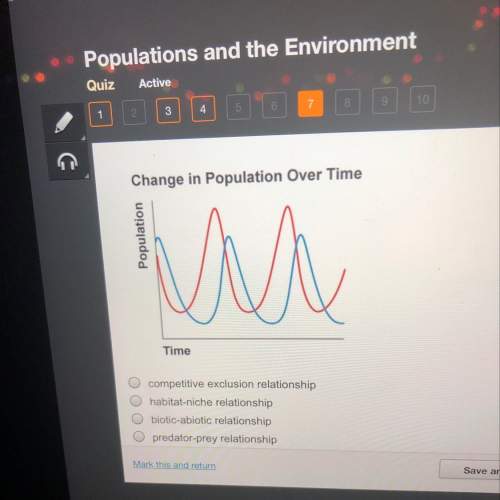
In the classic Meselson and Stahl experiment, E. coli are first grown in 15N-enriched media (0th generation) and, subsequently, switched to 14N-enriched media. A DNA sample isolated during the first generation of E. coli grown in 14N media is subjected to a centrifugation step in a dense CsCl gradient.
Assuming that replication occurs in a semiconservative fashion, the DNA sample will:
a) run as two bands (of equal intensity), one at the same position as a uniformly 15N-labeled DNA, and one at the same position as a uniformly 14N-labeled DNA.
b) run as one band, at the same position as a uniformly 15N-labeled DNA.
c) run as one band, at the same position as a uniformly 14N-labeled DNA.
d) run as one band, at a position expected for a DNA containing a 14N:15N ratio equal to 7.
e) run as one band, at a position expected for a DNA containing a 14N:15N ratio equal to 1.

Answers: 1
Another question on Biology


Biology, 22.06.2019 05:00
Urgent. the table shows the relative blood flow through some organs in the human body that is, the percentage of blood that flows through a given organ, through which organ(s) does all the blood flow? explain the effect of exercise on blood flow to skeletal muscles.
Answers: 2

Biology, 22.06.2019 21:00
Which of the claims below does this model support? select all the claims that are supported
Answers: 3

Biology, 22.06.2019 23:10
Which case is an atom least likely to bond with other atoms
Answers: 2
You know the right answer?
In the classic Meselson and Stahl experiment, E. coli are first grown in 15N-enriched media (0th gen...
Questions



Physics, 02.10.2019 09:50

Business, 02.10.2019 09:50

English, 02.10.2019 09:50


World Languages, 02.10.2019 09:50

Mathematics, 02.10.2019 09:50

English, 02.10.2019 09:50



Mathematics, 02.10.2019 09:50



Advanced Placement (AP), 02.10.2019 09:50





Spanish, 02.10.2019 09:50




